A maintenance plan for gravel roads
Gravel roads are where a large part of the Thetford population lives.
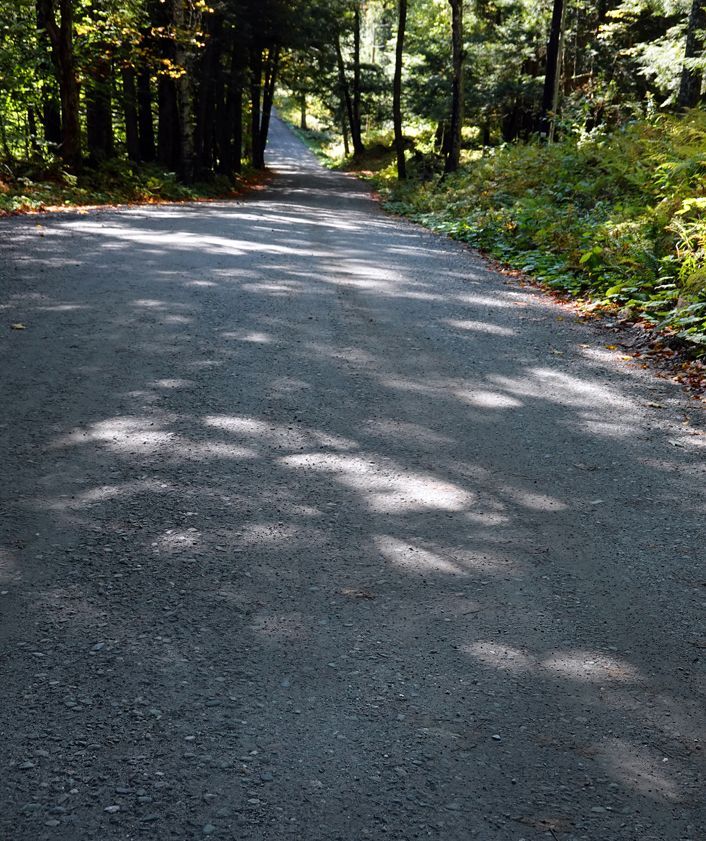
Within its borders Thetford maintains just over 63 miles of traveled roads. An additional 17.9 miles belong to the state. Of the 63 miles, a tad over 16 miles of road are paved, whereas 46 miles are gravel (aka dirt) roads. The Canada-based engineering and consulting company Stantec has been hired by the town to assess the condition of its traveled roads and to prioritize road repairs and upkeep over the next five years.
Stantec’s preliminary “scope of work” document places most of its emphasis on paved roads and how their condition will be rated. There are just a couple of references to gravel roads “rutting and washboarding.” However, gravel roads are where a large part of the population lives, and their condition has consequences for peoples’ ease of access to their homes. The purchase of fresh gravel for resurfacing is a yearly expense, $30,682 in 2017, $16,383 in 2018, $56,661 in 2019 and $24,004 in 2020, just in matierials. However, it is hard to estimate the real cost of maintaining these roads since road crew time, vehicle fuel, wear and tear are not reported separately for gravel roads in the town budget.
Like any road, a good gravel road is founded on a solid base. And road gravel is not just any old gravel, but a mixture of stones, grit, sand, and fine particles. Their proportions in the mix are not haphazard either, because they determine the properties of the gravel. A good road base should provide rigidity and adequate drainage by inclusion of 1/2 -3/4” stone (very roughly 30% of the mix), 1/4 to 1/2” grit (about 30%), plus sand and finer particles. This makes for a strong base, but the big stones make it difficult to grade and bumpy to drive on. It also doesn’t stick together well. Therefore a travel surface is layered on top. This contains fewer stones, a higher percentage of grit and sand plus finer particles, and also a small amount of very fine clay. The fine particles fill the spaces between the coarser components and help them stick together. The clay is both sticky and slippery. It acts as a binder and lends a degree of plasticity to the road surface. When graded and compacted, the clay and fines make for a tight surface that sheds rain water. An 8- to 10-ton vibratory roller is recommended to achieve this well-packed layer.

Naturally occurring gravel with rounded stones is often used; however gravel that has been crushed makes a more stable surface since crushing produces sharp stones that interlock. Gravel prepared for other purposes should not be put on roads — for instance gravel intended for fill at building sites. This material has a high sand content and drains well; however on a road it would remain loose and unstable, despite the best efforts of the grader operator.
To promote rapid rainwater drainage, most gravel roads are graded with a “crown” — a high centerline from which the road slopes away gently on either side to its ditches. The exception is when a road is cut into the side of a hill, in which case it may be graded to slope only towards a ditch on the downslope side. Either way, rainwater should run off in a continuous sheet to the ditch. Without sheet flow, water will channel into rivulets and erode the road surface.
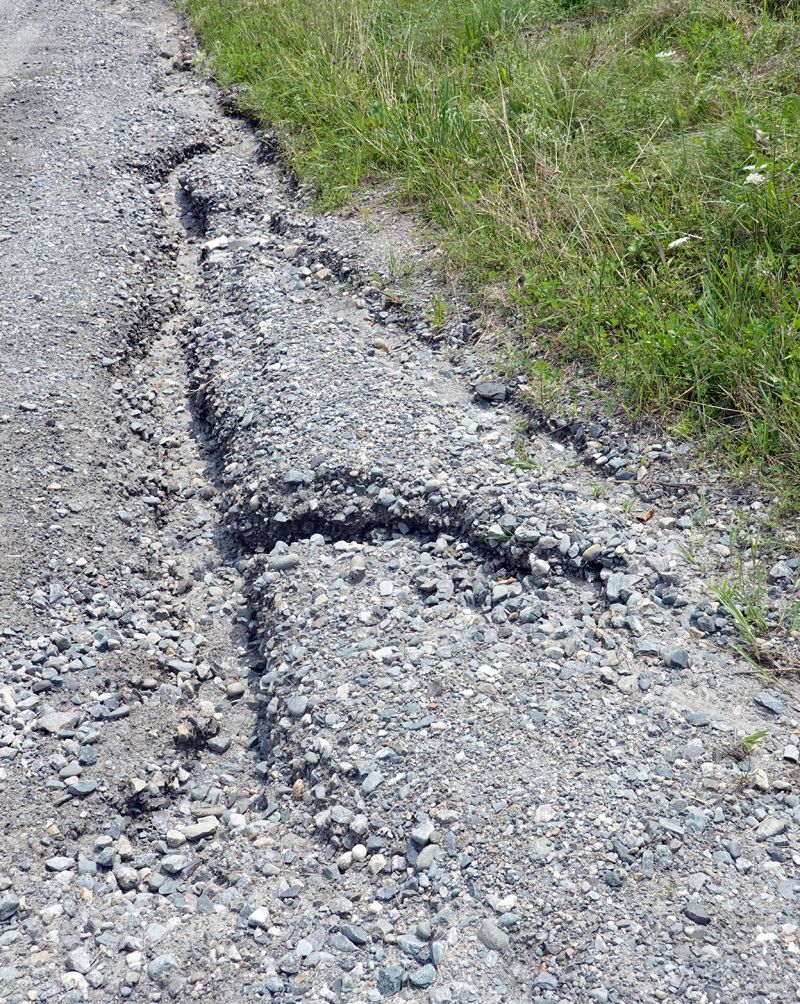
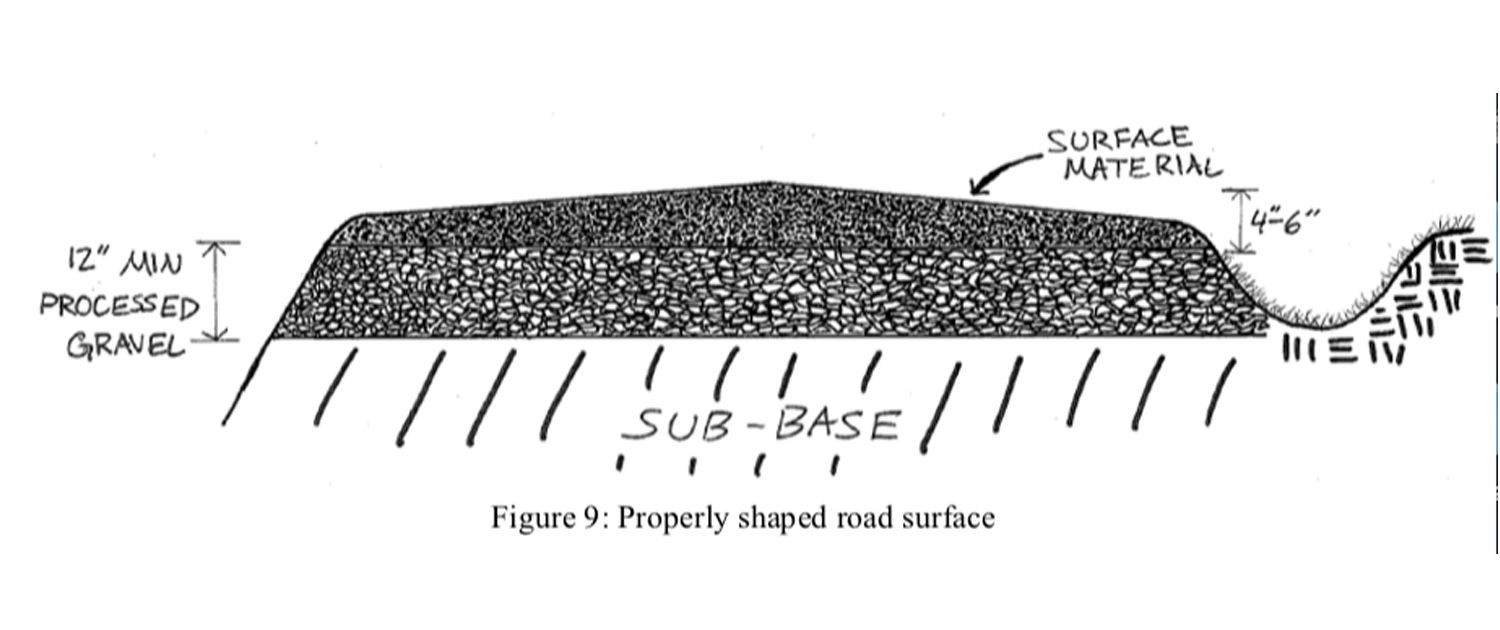
In spite of good materials and correct grading, gravel roads will never be as durable as paved ones. Traffic imposes wear and surface deterioration. One symptom is dust, which is the loss of the fine binder particles into the air. Binder particles not only stick larger aggregate together, they also retain moisture that contributes to cohesion of gravel. Without enough binder, the road surface doesn’t stick together, dries out faster, and starts to crumble.
Once this starts, the coarser aggregates get torn out by wheels of vehicles. This breakup of the surface can set the scene for rain erosion. It also encourages the corrugation or “washboarding” mentioned by Stantec — a series of ridges across the road that are made when vehicles drive over a loose surface. Speeding vehicles and heavy traffic exacerbate this.
Ruts in habitual wheel paths are a frequent feature of worn gravel roads. They most commonly appear in “mud season” when the sub-base soil is saturated and soft. Ruts can indicate that the road surface layer is too thin. Ruts interrupt the smooth runoff of rain and may lead to softening of the road surface by holding water. Or they may erode into miniature gullies. Filling ruts is not a good solution. It often leads to new ruts beside the ones just filled and can interfere with grading. The whole road surface should be scraped up, new gravel mixed in, and the surface re-graded and compacted. If, regardless of resurfacing, a stretch of road repeatedly forms ruts, it may be necessary to install a geotextile foundation and crushed stone fill beneath the surface.
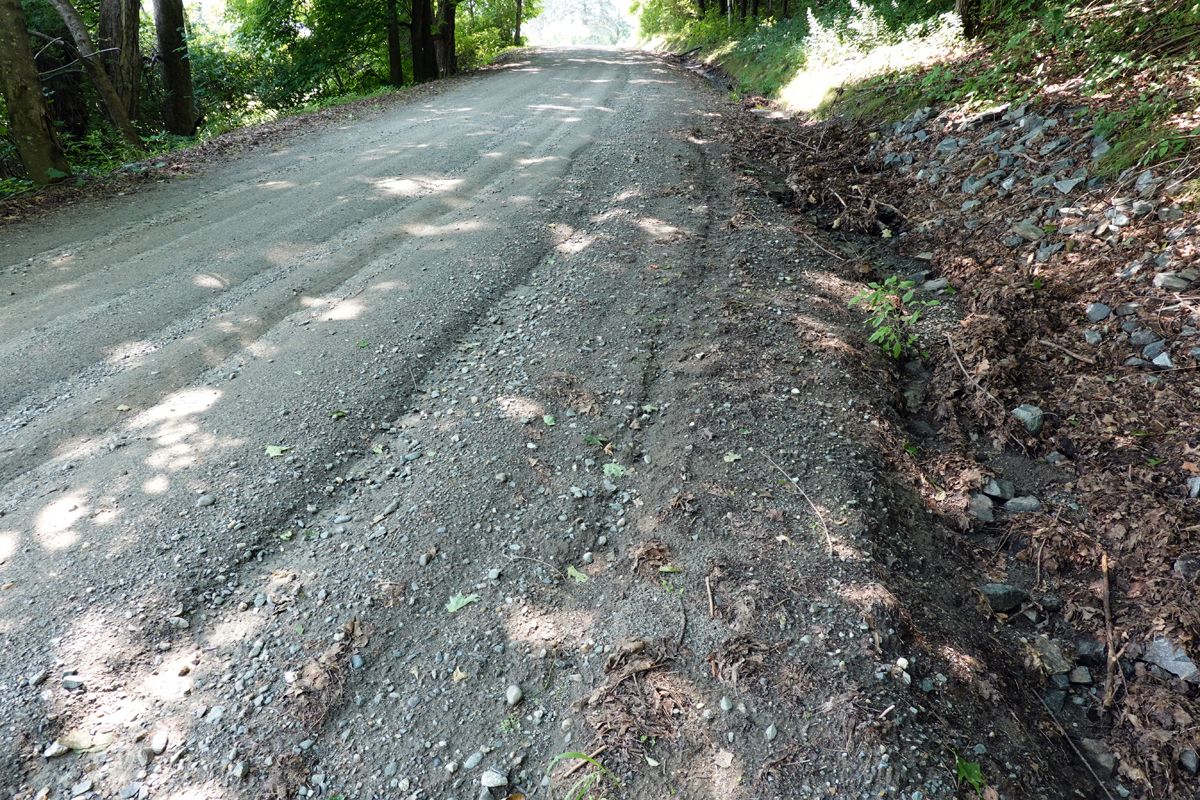
Potholes are another nuisance that may be blamed on a variety of causes. Frequent braking or turning on the same spot is one. Others include wet soil, poor drainage, or inadequate grading. Isolated potholes may be patched and compacted; however, a whole section of potholed road calls for surface excavating, adding more gravel, re-grading, and surface compaction.
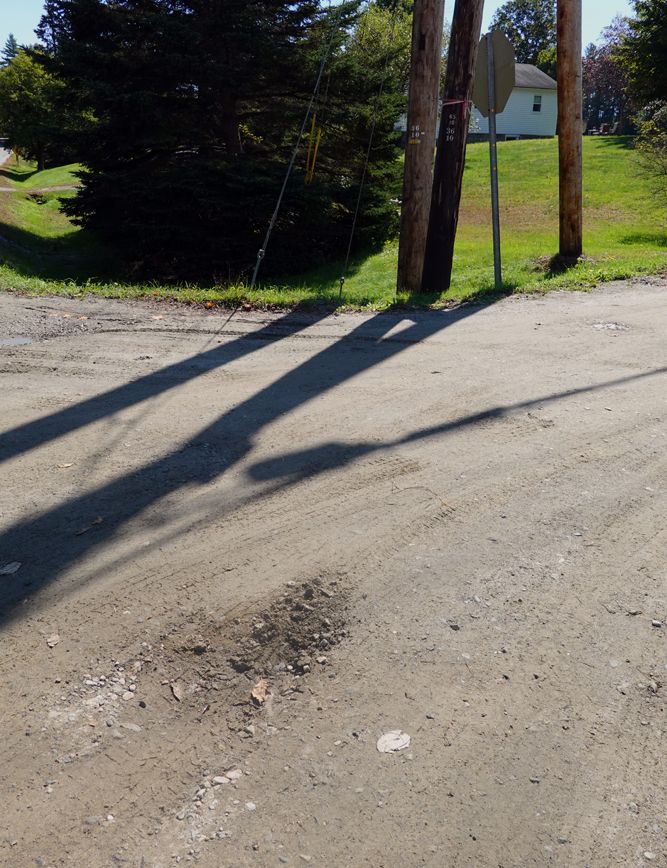
Repair and maintenance doesn’t stop at the road’s edge. Ditches are a vital part of road health. Standing water in a ditch leads to weakening of the road bed; therefore water must be drained away promptly. When trees shed their leaves, it often clogs ditches, especially in the fall. Allowing leaves to accumulate reduces ditch capacity, retains water where it can soften the road, and may hasten the need for road repairs.
Residents on gravel roads are well aware of places where these various problems exist. Stantec’s task is to catalog them, determine a list of priorities, and provide an estimate of what repairing them will cost the town. And armed with this information, Thetford will hopefully land some VTrans Better Roads grants in the future to supplement the “Gravel Resurfacing” budget line item.
Photo Credit: Li Shen
